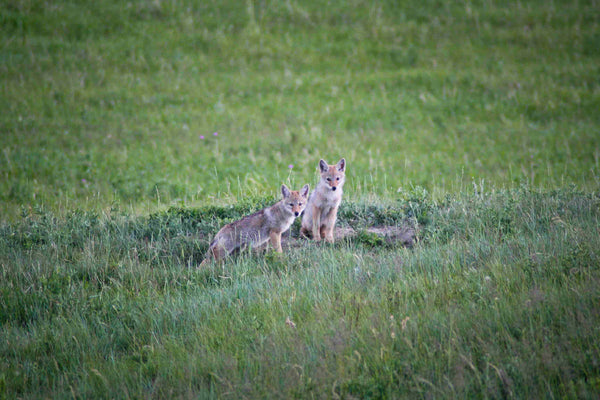Ethical, Local and Natural Beef
Local Beef Ethically and Naturally Raised
Our ranch sits in the convergence of four out of the five main ecological zones in Alberta. Diversity like this needs to be protected! Sustainable and ethical agriculture is one of our guiding principles.
We are 3rd generation ranchers and hope our children will ranch the same land. We think of our ranch like a national park, where we are the park rangers. Lots of different life lives on the ranch and we use the cattle herd to manage the grasslands like the Bison did, increasing biodiversity and ecosystem health. Our ranch supports many different families of animals, including a family of humans (us!) and we depend on it's health to feed ourselves as well! We have a deep connection with our land and want to protect its diversity and leave a positive legacy for generations to come.
Low Stress Handling
Keeping animals healthy and happy is our responsibility. It makes for top quality beef and is our duty as their caretakers.
We use low stress animal handling techniques, provide clean drinking water and rotate the animals regularly on fresh open pasture. Our animals are treated humanely and handled in a low-stress manner, using methods that recognize their instincts and behaviours and allow them to stay relaxed and quiet. We are taking the knowledge we've acquired about low stress handling techniques and applying that daily to our work on the ranch, always evolving and getting better.

Sustainability
Our ranch is a combination of forest and open pastures with numerous natural and artificial bodies of water. Birds, animals and insects rely on our land each year to raise their young. By fencing off ponds and sloughs from cattle we are able to provide a buffer zone of vegetation that provides duck nesting habitat and filters surface runoff before it enters the water bodies. Our forests are protected from damage from cattle by fencing them off to exclude cattle or by limiting the time cattle access them.
Grass evolved with grazers and needs grazers today to keep the land fertile and healthy. In this region, those grazers were predominantly the American Bison, but they have been replaced with cattle. That means that we have to mimic what the great Bison herds did to the land with our cattle. Allan Savoury, the father of Holistic Management, has proven that without grazing animals, land loses its fertility, releases CO2 and increases desertification. When managed properly, pastures can take in and permanently retain huge amounts of carbon dioxide through the growth and decomposition of plant matter that's only possible by pairing grass and grazers in a symbiotic relationship. There are numerous groups trying to restore natural habitat with grazers, check out the Savory Institute for an example.
Ben's grandfather John loved ducks and committed some of the ranch for use only by ducks and waterfowl
Elk and their calves on the ranch

Playful pups on the ranch

Little brown bats are endangered in Alberta. They live in several of the farm buildings and have bat houses erected for them as well

Native bees mating on our native grassland. Honey bees (from bee farmers) are European and compete with native bees for resources. Most Canadian bees are solitary and some live in small colonies, many nesting underground or in cracks in wood. They are specially adapted to pollinate our native flowers and are so valuable!

This is an incredibly lucky photo of a Stump Stabber! They tap on the wood and listen for the sounds of a grub inside the log. They then insert their ovipositor through the wood into the grub and inject a tiny, flexible egg. The Stump Stabber larval eats the grub and emerges as an adult. They are part of the incredible web of wildlife that we enjoy and protect.




